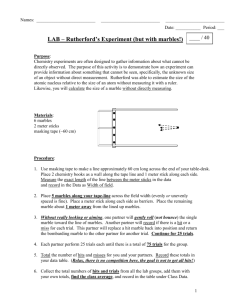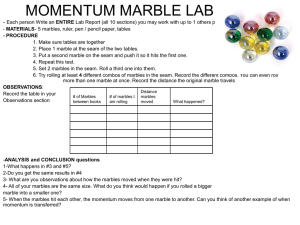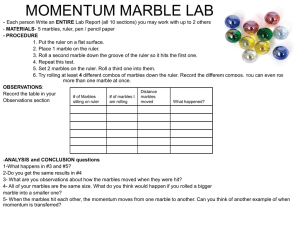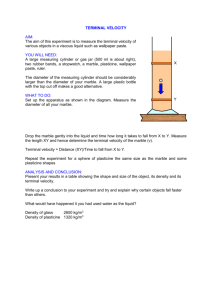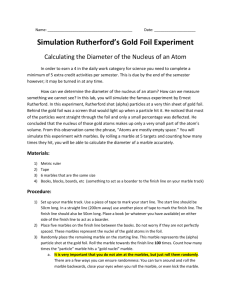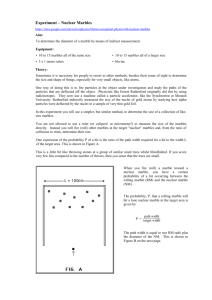Nuclear Marbles
advertisement
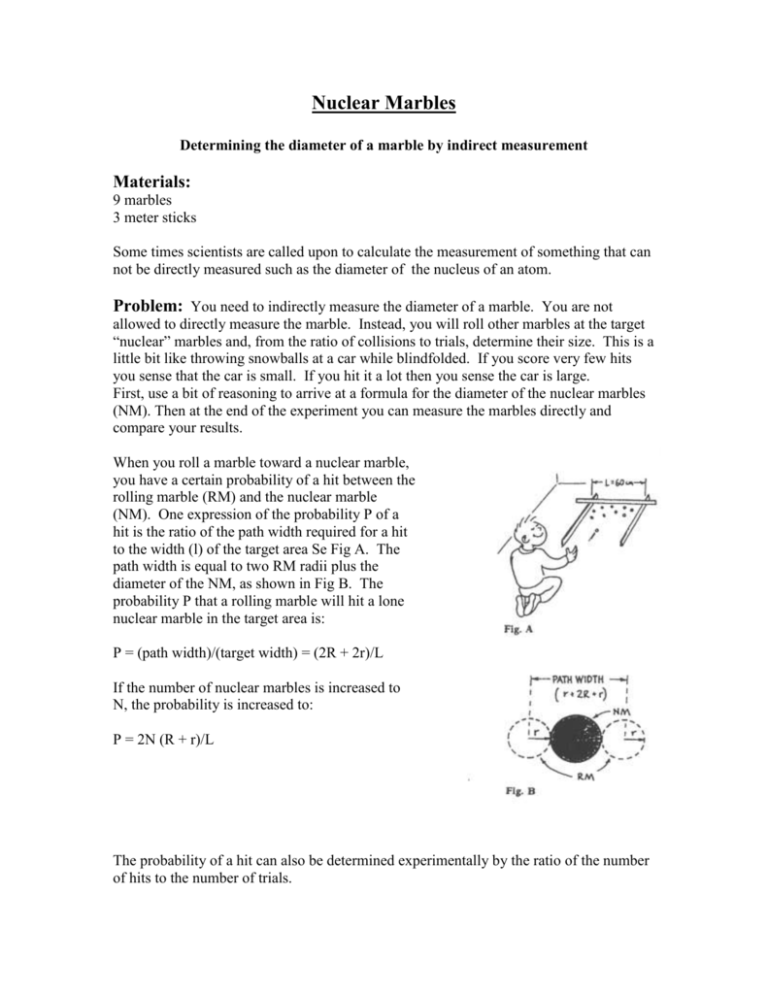
Nuclear Marbles Determining the diameter of a marble by indirect measurement Materials: 9 marbles 3 meter sticks Some times scientists are called upon to calculate the measurement of something that can not be directly measured such as the diameter of the nucleus of an atom. Problem: You need to indirectly measure the diameter of a marble. You are not allowed to directly measure the marble. Instead, you will roll other marbles at the target “nuclear” marbles and, from the ratio of collisions to trials, determine their size. This is a little bit like throwing snowballs at a car while blindfolded. If you score very few hits you sense that the car is small. If you hit it a lot then you sense the car is large. First, use a bit of reasoning to arrive at a formula for the diameter of the nuclear marbles (NM). Then at the end of the experiment you can measure the marbles directly and compare your results. When you roll a marble toward a nuclear marble, you have a certain probability of a hit between the rolling marble (RM) and the nuclear marble (NM). One expression of the probability P of a hit is the ratio of the path width required for a hit to the width (l) of the target area Se Fig A. The path width is equal to two RM radii plus the diameter of the NM, as shown in Fig B. The probability P that a rolling marble will hit a lone nuclear marble in the target area is: P = (path width)/(target width) = (2R + 2r)/L If the number of nuclear marbles is increased to N, the probability is increased to: P = 2N (R + r)/L The probability of a hit can also be determined experimentally by the ratio of the number of hits to the number of trials. P = H/T If (R + r) is equal to d (diameter) then solve for the diameter of the marble in terms of H,T,N, and L. Marble diameter d = __________________ Let’s put your formula to the test. Procedures: 1. Place 8 marbles in an area 60 cm wide as in fig A. Roll another marble into the area blindly and record all hits and all trials. Throw at least 200 trials. a. A hit is any hit on the way into the area prior to striking the back of the target. (You can only get 1 hit per throw.) Multiple hits do not count. b. A miss is when the marble passes all the way through the area with out striking the back. c. Each time a marble is thrown it is counted as a trial. 2. Record all Hits and Trials. a. Hits = __________ b. Trials = _________ 3. Use your formula and calculate the diameter of the marble. 4. Using a Vernier caliper measure to diameter to the most accurate level. 5. Calculate your percent error. Questions: 1. After completing this experiment what was your reaction to the accuracy of the activity and what conclusion could you draw from this activity? 2. How could this technique be used in laboratories around the world? 3. Describe how Ernest Rutherford could have used this lab with the gold foil experiment.

